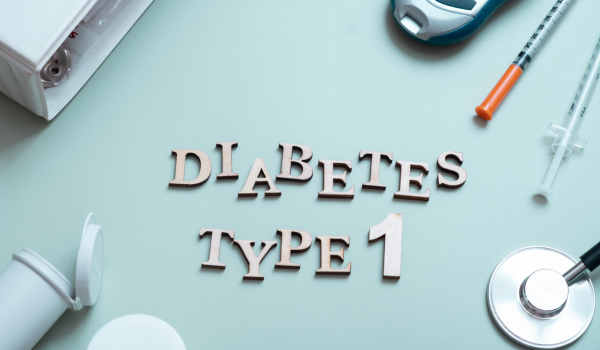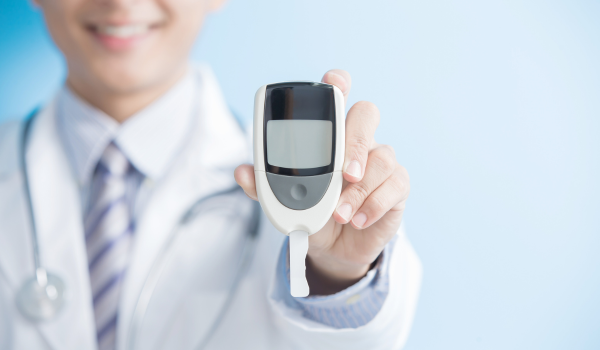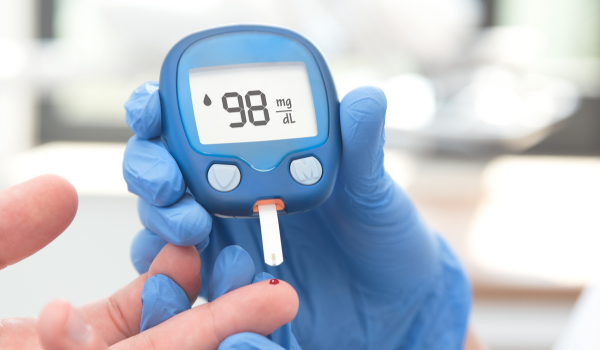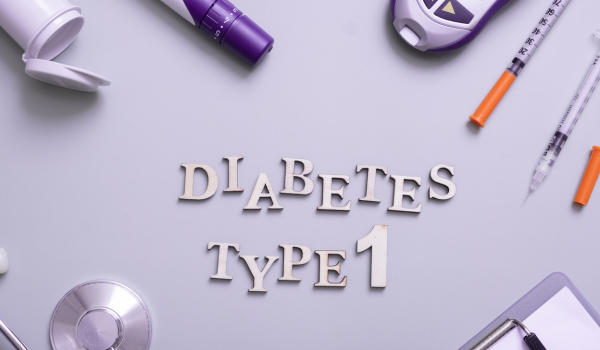
Blood Sugar Imbalance
The most immediate and central effect of type 1 diabetes is the disruption of blood sugar balance. Without insulin, glucose builds up in the bloodstream instead of entering the body’s cells. This condition, known as hyperglycemia, leads to many of the classic symptoms—frequent urination, excessive thirst, and fatigue.
At the same time, cells are starved of their main source of energy. To compensate, the body turns to fat and muscle for fuel, which can lead to weight loss and the production of acidic ketones. This imbalance is the starting point for nearly every complication associated with type 1 diabetes.
The Pancreas
Type 1 diabetes originates in the pancreas, specifically in the insulin-producing beta cells of the islets of Langerhans. The immune system mistakenly attacks and destroys these cells, leaving the pancreas unable to produce insulin.
Unlike type 2 diabetes, where some insulin may still be made, type 1 involves near-total insulin deficiency. This makes external insulin replacement essential for survival.
The pancreas may continue to produce small amounts of insulin in the early “honeymoon phase,” but eventually, most beta cells are lost permanently.
The Liver
The liver plays a vital role in storing and releasing glucose. In people with type 1 diabetes, the absence of insulin disrupts this process. Normally, insulin signals the liver to store glucose as glycogen after meals. Without insulin, the liver instead releases glucose continuously, worsening hyperglycemia.
In addition, during times of insulin deficiency, the liver produces ketones from fat breakdown. While ketones can serve as an alternative fuel, excessive accumulation leads to diabetic ketoacidosis (DKA)—a life-threatening complication.
The Kidneys
The kidneys act as filters, removing waste products from the blood. When blood sugar rises too high, the kidneys try to excrete excess glucose through urine. This causes dehydration, frequent urination, and increased thirst.
Over time, prolonged high blood sugar damages the tiny blood vessels within the kidneys. This condition, called diabetic nephropathy, can eventually lead to kidney failure, requiring dialysis or transplantation. Early detection and careful glucose management are key to prevention.
The Eyes
One of the most feared complications of type 1 diabetes is damage to the eyes. Persistently high blood sugar harms the small blood vessels in the retina, leading to diabetic retinopathy.
Symptoms may begin with blurred vision but can progress to vision loss or blindness if untreated. Diabetic eye disease is one of the leading causes of blindness in adults worldwide.
Routine eye exams and strict blood sugar control significantly reduce the risk of vision loss in people with type 1 diabetes.
The Nervous System
Type 1 diabetes can also damage nerves, a condition known as diabetic neuropathy. High blood sugar interferes with the ability of nerves to transmit signals and damages the blood vessels that supply them with oxygen and nutrients.
This leads to symptoms such as:
-
Numbness or tingling in the hands and feet
-
Burning or stabbing pain
-
Muscle weakness
-
Loss of coordination
Neuropathy not only affects comfort but also increases the risk of injuries, infections, and foot ulcers.
The Heart
Cardiovascular health is deeply affected by type 1 diabetes. People with the condition are at higher risk for heart disease, stroke, and high blood pressure.
Chronic hyperglycemia damages blood vessels and accelerates atherosclerosis—the buildup of fatty deposits in arteries. Combined with other risk factors like high cholesterol, this dramatically raises the risk of heart attack.
Even young adults with type 1 diabetes may face elevated cardiovascular risks, highlighting the importance of early and consistent management.
The Digestive System
Nerve damage from diabetes can extend to the digestive tract, leading to a condition called gastroparesis. This occurs when the stomach muscles don’t function properly, slowing down the emptying of food.
Symptoms include bloating, nausea, vomiting, and unpredictable blood sugar spikes. Managing gastroparesis often requires dietary adjustments and medications that improve stomach motility.
The liver, intestines, and gut microbiome may also be influenced by diabetes, although research is still ongoing in these areas.
The Skin
The skin often reflects underlying health, and type 1 diabetes can lead to noticeable changes. High blood sugar reduces circulation and weakens immune defenses, making infections more common.
Typical issues include:
-
Fungal infections such as athlete’s foot or yeast infections
-
Bacterial infections like boils or styes
-
Itchy, dry skin
-
Slow-healing wounds
Good hygiene, blood sugar control, and early treatment of skin issues are critical to preventing complications.
The Immune System
Type 1 diabetes itself is the result of an immune system malfunction. But beyond the initial autoimmune attack, the condition also weakens the body’s ability to fight infections.
High blood sugar impairs white blood cell function, reducing their effectiveness in combating bacteria and viruses. This means that even minor illnesses can become more severe and longer lasting.
Vaccinations and preventive care are particularly important for people with type 1 diabetes.
Mental Health
The effects of type 1 diabetes extend beyond the physical body. The constant monitoring of blood sugar, insulin injections, and dietary management can take a toll on mental health.
Common challenges include:
-
Diabetes distress (emotional exhaustion from management demands)
-
Anxiety about hypoglycemia or complications
-
Depression linked to chronic illness
Support groups, counseling, and stress-reduction techniques are vital for maintaining both physical and emotional well-being.
Growth and Development
In children and adolescents, type 1 diabetes can affect growth and puberty. Poorly controlled blood sugar may delay puberty or slow height and weight gain.
Early diagnosis and proper insulin therapy help children grow normally and achieve healthy development milestones. Pediatric diabetes care teams focus on ensuring that young patients maintain both physical and emotional health as they mature.
The Feet
Foot health is a major concern in all forms of diabetes, including type 1. Neuropathy reduces sensation in the feet, while poor circulation limits healing. This combination increases the risk of foot ulcers, infections, and, in severe cases, amputations.
Daily foot checks, proper footwear, and regular podiatry visits are essential for prevention.
Reproductive Health
Type 1 diabetes can influence fertility and pregnancy outcomes. Women with poorly controlled blood sugar may experience irregular menstrual cycles and higher risks during pregnancy, such as preeclampsia and birth complications.
For men, neuropathy and circulation problems can contribute to erectile dysfunction.
However, with good glucose control and medical guidance, many individuals with type 1 diabetes have healthy pregnancies and sexual health.
Complications Over Time
The longer type 1 diabetes goes uncontrolled, the more likely complications become. Acute complications like diabetic ketoacidosis can appear quickly, while chronic complications such as kidney failure, heart disease, and vision loss develop gradually over years.
This is why early diagnosis, consistent insulin therapy, and regular monitoring are essential to preserving long-term health.
The Role of Management
Despite its widespread effects, type 1 diabetes can be managed effectively. Modern treatments—including insulin pumps, continuous glucose monitors, and advanced insulin formulations—allow individuals to maintain near-normal blood sugar levels.
Healthy lifestyle habits such as balanced eating, regular exercise, stress management, and preventive checkups further reduce risks. With proper care, people with type 1 diabetes can live long, healthy, and active lives.
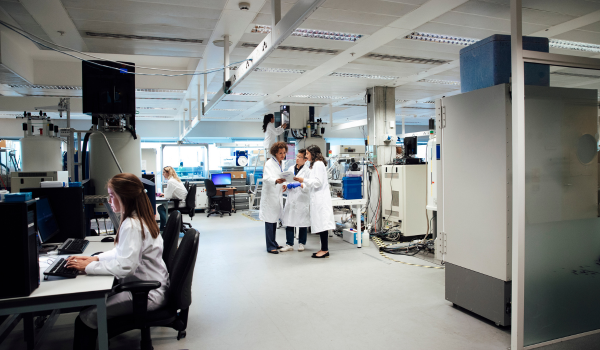








.png)


